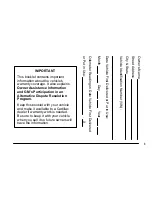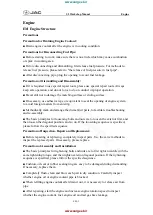
Further related subjects:
R
Notes on tire pressure (
/
page 448)
R
Tire pressure table (
/
page 449)
R
Tire and Loading Information placard
(
/
page 454)
Tire pressure monitoring system
Function of the tire pressure monitoring sys‐
tem
&
DANGER Risk of accident due to incor‐
rect tire pressure
Each tire, including the spare tire (if present),
should be checked at least once a month
when cold and then inflated to the pressure
recommended by the vehicle manufacturer
(see the Tire and Loading Information plac‐
ard on the driver's side B‑pillar or the tire
pressure table on the inside of the fuel filler
flap of your vehicle). If your vehicle has tires
of a different size than the size indicated on
the Tire and Loading Information placard or
the tire pressure table, you must find out the
correct tire pressures for these tires.
As an added safety feature, your vehicle has
been equipped with a tire pressure monitor‐
ing system (TPMS) that illuminates a low tire
pressure indicator lamp when one or more of
your tires are significantly underinflated.
Accordingly, if the low tire pressure indicator
lamp lights up, you should stop and check
your tires as soon as possible, and inflate
them to the correct pressure. Driving on a
significantly underinflated tire causes the tire
to overheat and can lead to tire failure.
Underinflation also increases fuel consump‐
tion, reduces the life expectancy of the tire
and may adversely affect the handling and
braking characteristics of the vehicle. Please
note that the TPMS is not a substitute for
proper tire maintenance, and it is the driver's
responsibility to maintain correct tire pres‐
sure, even if underinflation has not reached
the level to trigger illumination of the TPMS
low tire pressure indicator lamp.
Your vehicle has also been equipped with a
TPMS malfunction indicator to indicate when
the system is not operating properly. The
TPMS malfunction indicator is combined with
the low tire pressure indicator lamp. When
the system detects a malfunction, the indica‐
tor lamp will flash for approximately a minute
and then remain continuously illuminated.
This sequence will continue upon subsequent
vehicle start-ups as long as the malfunction
exists.
When the malfunction indicator is illumina‐
ted, the system may not be able to detect or
signal low tire pressure as intended. TPMS
malfunctions may occur for a variety of rea‐
sons, including the installation of incompati‐
ble replacement or alternate tires or wheels
on the vehicle that prevent the TPMS from
functioning properly.
Always check the TPMS malfunction warning
lamp after replacing one or more tires or
wheels on your vehicle to ensure that the
replacement or alternate tires and wheels
Wheels and tires 451
Содержание S 450 2020
Страница 8: ...6 At a glance Cockpit ...
Страница 10: ...Head up Display 275 Rear window roller sunblind 91 8 At a glance Cockpit ...
Страница 11: ......
Страница 12: ...Instrument Display 10 At a glance Indicator and warning lamps ...
Страница 14: ...12 At a glance Overhead control panel ...
Страница 16: ...14 At a glance Door control panel and seat adjustment ...
Страница 18: ...Vehicles with a reclining rear seat 16 At a glance Control settings in the rear passenger compartment ...
Страница 20: ...18 At a glance Emergencies and breakdowns ...
Страница 277: ...Switching the Head up Display on off Press button 1 Instrument Display and on board computer 275 ...
Страница 408: ...Rear Seat Entertainment System 4 Media 5 à Sound 5 Dynamic Range Control Select the setting 406 Multimedia system ...
Страница 600: ......
Страница 601: ......
Страница 602: ......
















































